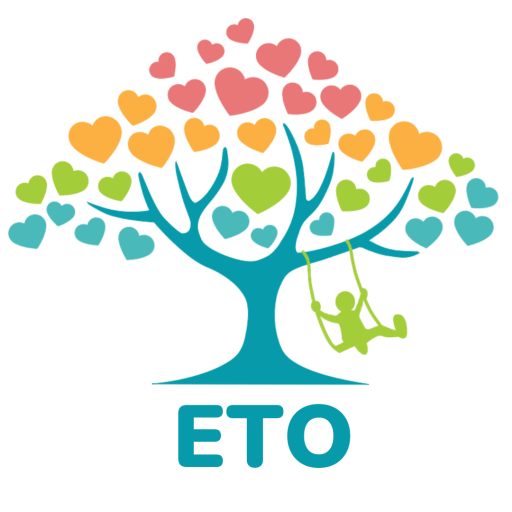Learning to read is an extremely complex process, made possible by a number of basic ‘pre-reading skills’. Whilst a lot of kids learn the final task of reading fluently and advanced comprehension at school with highly trained educators, developing the necessary pre-reading skills can be supported at home through toys and play!
To understand the complexities of learning to read, we’ve listed below some pre-reading skills kids must master before tackling reading:
1. Recognising Letters
Children must be able to perceive the shapes made my letters before being able to recognise whole words. Practising saying, writing and tracing letters, as well as playing with 3D shapes of letters can support this visual discrimination.
2. Letter Orientation
Children need to understand how important letter orientation is, e.g. a ‘b’ becomes a ‘d’ when facing the other way.
3. The Alphabet
In the English language, not only do children need to learn the 26 letters of the alphabet, but also the 17 capital letters that are different from their lower case forms e.g. ‘g’ and ‘G’.
4. Phonemes
Phonemes are the sounds attached to letters; kids must be able to distinguish not only between the shapes of letters, but also between their sounds. You can help enhance auditory discrimination skills by sounding out letters of words with children – but they may lose interest in this quickly. A fun, engaging option could be teaching letter-sound associations through nursery rhymes or sorting pictures of common objects into groups according to the first sound of each object!
Difficulties with Reading and Dyslexia
Being such a complex skill, it is not surprising some children have difficulty learning to read. Difficulties reading can be due to poor early language development, inadequate instruction or insufficient reading practice, intellectual or physical disabilities including vision/hearing problems, or specific learning disabilities.
Dyslexia is the most common specific learning disability and believed to affect some 10% of the Australian population. It is characterised as a language-based difficulty, and children can struggle with any of the pre-reading skills detailed above. For example, children with dyslexia have difficulties with letter orientation (reversals of letters are common), they experience difficulties with sequencing so learning the alphabet can be a long process, or they may struggle with phonemes and find distinguishing sounds in everyday speech and matching these with their letter shapes (aka phonics) very challenging.
Secondary problems with word comprehension, spelling, writing and knowledge acquisition may also develop as a result of dyslexia, and if left untreated can have broad and significant effects on academic success and wellbeing. It is not uncommon for children experiencing dyslexia to also exhibit intense frustration, act aggressively, or withdraw.
According to practitioners some signs of dyslexia to look out for include:
Among preschoolers:
- Trouble learning nursery rhymes
- Frequently confusing words that sound alike
- Mispronouncing words
- Difficulty recognising letters of the alphabet
Among primary school-aged children:
- Difficulty learning names and sounds of letters
- Difficulty separating sounds or sounding out words
- Difficulty recognising words
- Difficulty with spelling
- Slow, laboured reading and often strongly dislike reading
Among adolescents:
- Slow or ‘choppy’ reading
- Poor comprehension
- Requiring additional time to complete assignments/exams
- History of reading difficulty
Supporting your Child with Dyslexia
The good news is, despite being a lifelong & persistent condition, children with dyslexia can learn to read and it is never too late to intervene! Researches in the field state that children with dyslexia often need to overlearn the rules of language requiring a lot of repetition and practice! This begins at home as parents, carers and siblings talk, read, and play with the child.
While it can be tempting for parents to attempt to support their child with reading difficulties by teaching them to read at home - and parental encouragement has a positive influence – it is important to ensure the cause of the reading difficulty is investigated correctly through discussion with teachers, and referral to a speech pathologist or psychologist. If the child is diagnosed with dyslexia after a comprehensive assessment, these professionals can provide the specialist training required.
Nonetheless, parents can still help kids with dyslexia at home by supporting pre-reading skills through play. Types of play to help at home include:
- Playing I-Spy or naming/sorting games to encourage identification of initial sounds/letters of objects
- Reading nursery rhymes – to support recognising phonemes (sounds of letters) in words and picking out rhyming words
- Children with dyslexia often experience weaknesses in short-term memory, so parents can help strengthen this by playing simple memory games asking “What did we do on the weekend?” to encourage recall.
References:
Handler, S. M. (2016). Dyslexia: what you need to know. Contemporary Pediatrics, 33(8), 18-23.
Lawrence, D. (2009). Chapter 5: Teaching the dyslexic child. In Understanding Dyslexia. Maidenhead: McGraw-Hill Education.

